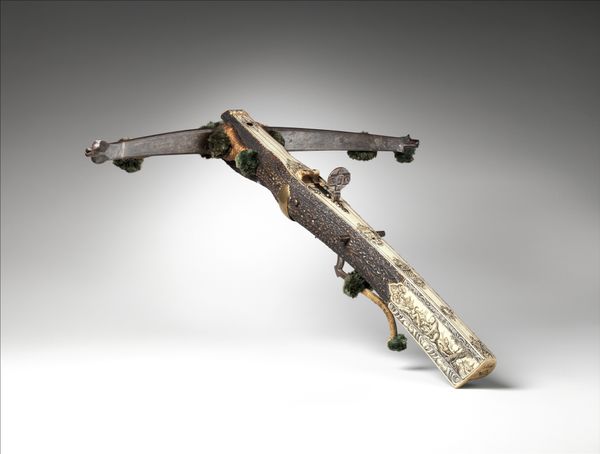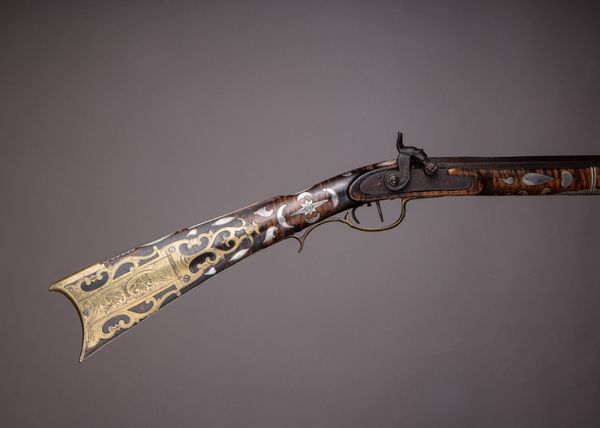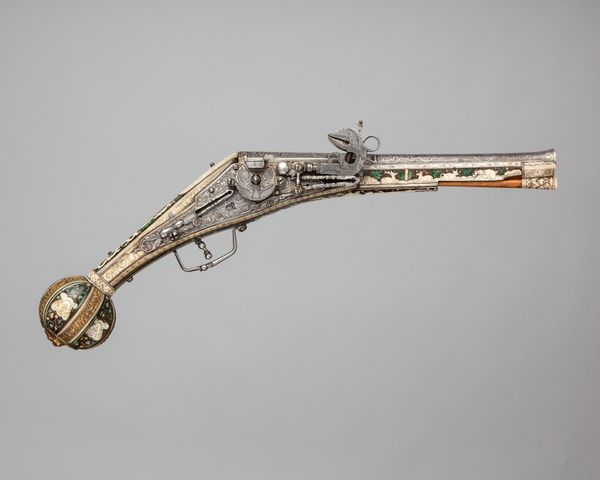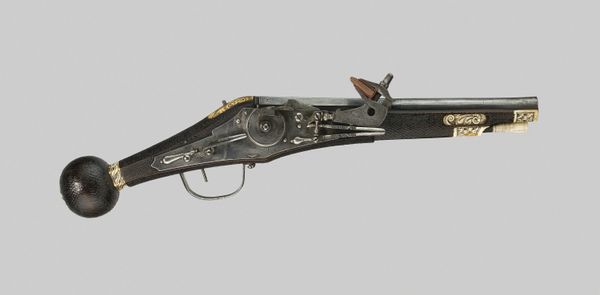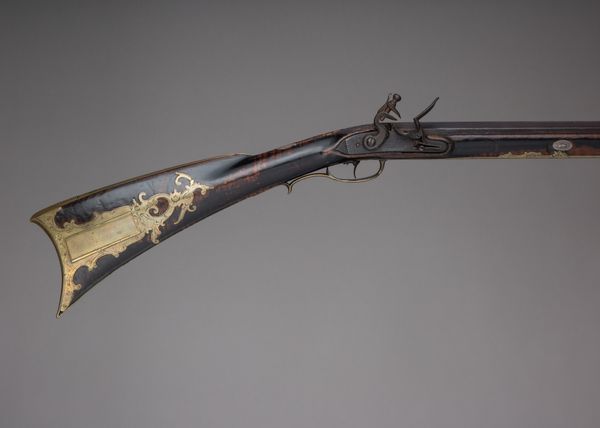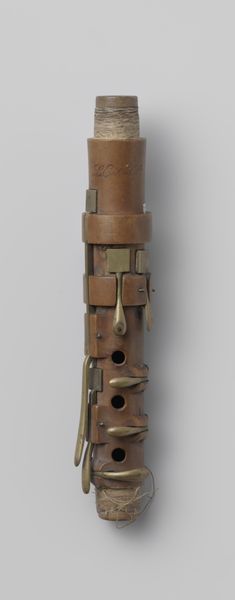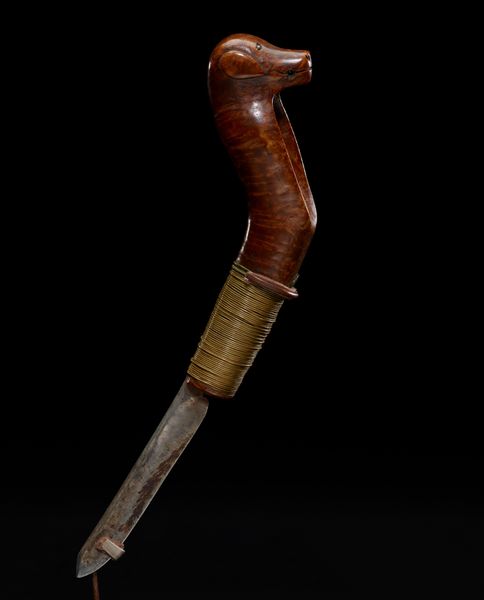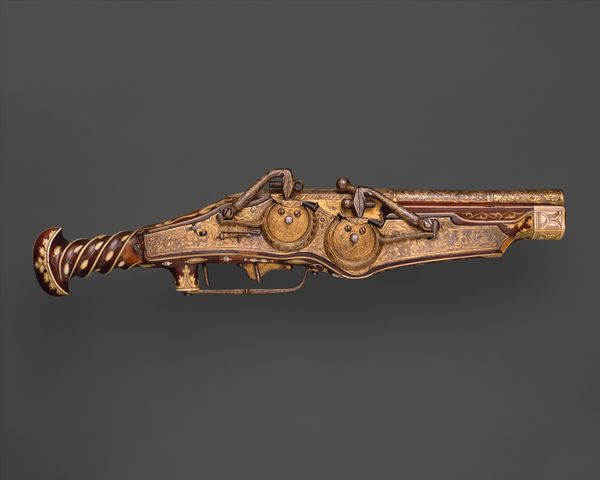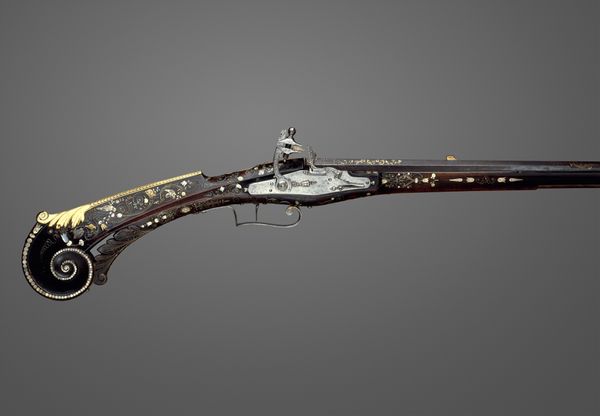
Crossbow (Halbe Rüstung) with Winder (Cranequin) 1550 - 1755
0:00
0:00
metal
#
weapon
#
medieval
#
germany
#
baroque
#
metal
#
armor
Dimensions: crossbow: L. 26 15/16 in. (68.4 cm); W. 29 7/8 in. (75.8 cm); Wt. 13 lb. 15 oz. (6329 g); winder: L. 14 in. (35.5 cm); W. 4 1/8 in. (10.4 cm); Wt. 5 lb. 3 oz. (2341 g)
Copyright: Public Domain
This crossbow with winder was made by Johann Gottfried Hänisch the Elder, likely in the 18th century, using steel, wood, horn, and various decorative materials. Consider the weight of the steel in the bow itself, and then look at the stock, which is inlaid with intricate scenes. The winder, or cranequin, is also made of steel, and it has a substantial heft. These objects were produced to kill, and at close range, but they are also deeply invested with aesthetic value. This combination of brutal functionality and refined craftsmanship is interesting. The crossbow represents a pre-industrial mode of production, with a single artisan responsible for the whole object. But it also speaks to a society in which even instruments of death could be customized, ornamented, and made deeply personal. The act of hunting was once a preserve of the elite. The decoration elevates this weapon beyond mere utility, turning it into a symbol of power and status.
Comments
No comments
Be the first to comment and join the conversation on the ultimate creative platform.
